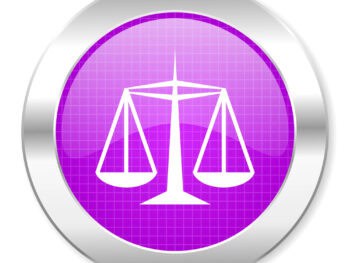Two Big Changes in Claims Handling
20-30 years ago, a claims adjuster used to investigate claims a lot differently than they do today. Back then, adjusters were given legal pads, a tape recorder, a pen, a company car, and a list of their claims. Some say that the technological trend we live in today has negatively affected the art of investigation for injury claims. But how? And what is so different today when compared to 30 years ago? The answer to this is subject to argument, but there are a lot of clear differences when you compare today’s insurance adjuster to the one of yesteryear. Here are the pros and cons on the two biggest changes in the way claims are handled below:
Field adjusters versus in-office claims adjusters
Back in the day, adjusters always did in-person statements. This entailed going to the employer or house of the claimant and taking their statement along with gathering their pertinent information, and putting paper notes in a manila folder which consisted of the actual claim forms and information. [WCx]
Field Adjusters Meet You Face-Face
In the past, if you are the adjuster and you are sitting across from the claimant, it could be considered more difficult for the claimant to distort the injury or accident details when recalling what happened. In fact, seeing your claimant in their actual home environment was considered a good way of “sizing them up” when it came to their complaints of injury and how their actual behavior and activities of daily living were affected. Since you are right there, you can look around the house and see what is actually going on. Is the house neat and tidy? Is the claimant wincing in pain or finding it difficult to sit still? Does your injured worker have dirty fingernails that show they may be doing activities more strenuous than what they are telling their doctor they can do? Do they have a good family support system present to help them in their time of need or to tend to their daily tasks? The answers to these questions could affect the outcome of the claim, and what the future could hold for where the claim is going to go in the future.
Today Adjusters Work Almost Exclusively by Phone
Today, the role of a field adjuster is about gone. Some insurance carriers still have field adjusters to do accident investigations and so on, but it is nowhere near the capacity that it used to be. Claimants can “hide behind their phone” and essentially make any allegation they want since they do not have to put on an act with their adjuster sitting right there.
Since the claimant rarely if ever sees their actual adjuster, a personal relationship is really not made, be it positive or negative. By keeping the adjuster in an office, the carrier eliminated large overhead costs with company vehicles, drive time, mileage, and so on. This also allows the adjuster to carry a larger caseload. Since they are chained to the office they are capable of handling a lot more than someone who is on the road. This again can be seen as positive or negative. The point is that the actual in-person investigation that all adjusters used to do is no longer a factor. Whether or not this is a negative in regards to the actual investigation is tough to prove. Adjusters nowadays have had hours of training about how to interview, and what verbal and nonverbal cues to pick up on when they are talking to their injured parties. There is more in-depth training involved now than there used to be years ago, both in investigation tactics and in medical terminology training. So the difference really lies in the adjuster, and how good they are at doing their job. There were good adjusters and bad adjusters 20 years ago, and there are good adjusters and bad adjusters now. [WCx]
“Start to Finish” claims handling versus ascending levels of adjusters
In the past, adjusters were assigned to certain employers or insurance agencies, and that sole adjuster was the one to handle claims from either of those two parties. Not only did they get every claim those parties produced, but the adjuster of the past handled those claims from start to finish no matter what the level of severity. This lead to the adjuster forming a great relationship with those agencies or employers, and several positives came of this relationship. The adjuster knew an employer in and out, toured their facility and knew the job tasks demanded of their workers. The adjuster knew a lot more about the employer than the injured worker may think they knew.
Pro of Single Adjuster is Level of Employer Knowledge
If the adjuster knows the job titles, responsibilities, layout of the floor, the risk managers, and the executive staff, then an in-depth relationship is made, and it is hard to put a price on that. A single adjuster could be saving this employer a lot in insurance expense and premium cost, just by the simple fact that the adjuster knows the employer’s demands and what goes on at this employer on a daily basis.
Nowadays, it may be considered a luxury if the adjuster that handles your claims is even in the same state as the employer. Out of state adjusters miss out on local politics, stereotypes of local doctors and clinics, and the overall work ethic of people in one city versus another. Even more disconcerting, the adjusters start to bounce files to other adjusters in other states depending on the financial exposure or reserves allocated by the carrier.
Con is Unspecialized Claim Experience
This can be considered a pro or con. If one adjuster specializes in severe injuries, and you incur a severe injury for a comp claim, then it would make sense that you want that adjuster to handle the file versus the entry-level adjuster who doesn’t have the experience or background in dealing with severe injuries. But, negative issues can come attached to those carriers who bounce claims around, namely the main issue that this new adjuster has not handled the claim in the very beginning. A lot can go on early in a claim, and every adjuster has their own style of claims handling in general. So what if some factors were missed early on that could affect the outcome of the claim? What if certain questions were not asked that could have affected the compensability of the claim, had they been asked the day after the injury versus being asked months later?
This is what can frustrates claimants the most. Just when they get comfortable and start to trust the first adjuster, their file is moved to another adjuster. They have to essentially repeat the whole process over again, possibly including taking another statement and trying to form another relationship with this new adjuster. Maybe this new adjuster doesn’t return calls as quickly as the first adjuster. Maybe the new adjuster is not as verbose as the first adjuster, and the claimant feels that this new adjuster is not paying them the attention they feel they were paid before. Whatever the case may be, there are again pros and cons to each argument about which way is best.
Summary
These two issues have only scratched the surface between how claims are handled now versus how they were handled 20-30 years ago. Which way is better is best left up to the parties having this discussion. As you can see, even with these two changes, it can open the door to hours of discussion. The fact is that it is 2012, and with the technological advances that have been made, both in the insurance industry and in the industry in general, we have to adapt to these changes and provide what we think will be the best info to help the adjuster make the proper decisions handing their claims.
Let’s face it, claims are not going anywhere. How we handle those claims is a constantly changing atmosphere, and you have to adapt to change.
Author Rebecca Shafer, JD, President of Amaxx Risk Solutions, Inc. is a national expert in the field of workers compensation. She is a writer, speaker, and publisher. Her expertise is working with employers to reduce workers compensation costs, and her clients include airlines, healthcare, printing/publishing, pharmaceuticals, retail, hospitality, and manufacturing. She is the author of the #1 selling book on cost containment, Workers Compensation Management Program: Reduce Costs 20% to 50%. Contact: RShafer@ReduceYourWorkersComp.com.
Editor Michael B. Stack, CPA, Director of Operations, Amaxx Risk Solutions, Inc. is an expert in employer communication systems and part of the Amaxx team helping companies reduce their workers compensation costs by 20% to 50%. He is a writer, speaker, and website publisher. www.reduceyourworkerscomp.com. Contact: mstack@reduceyourworkerscomp.com.
WORKERS COMP MANAGEMENT MANUAL: www.WCManual.com
Do not use this information without independent verification. All state laws vary. You should consult with your insurance broker or agent about workers comp issues.
©2012 Amaxx Risk Solutions, Inc. All rights reserved under International Copyright Law. If you would like permission to reprint this material, contact us at: Info@ReduceYourWorkersComp.com.















